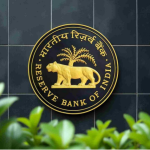For individuals who prioritize the safety of their principal and a consistent income stream, the Reserve Bank of India (RBI) Floating Rate Savings Bond 2020 (Taxable) continues to be an exceptionally strong contender in the Indian investment landscape. With the interest rate for the current period of July 1 to December 31, 2025, firmly set at 8.05%, these government-backed bonds offer a compelling blend of security and attractive returns, especially amidst fluctuating market conditions.
The appeal of the RBI Floating Rate Savings Bond lies primarily in its sovereign guarantee. Issued by the Government of India, these bonds carry virtually no credit risk, making them one of the safest avenues for investment in the country. This fundamental aspect provides unparalleled peace of mind for conservative investors for whom capital preservation is paramount.
The interest rate, currently at 8.05%, is noteworthy. It is linked to the prevailing National Savings Certificate (NSC) rate, with an additional 0.35% spread. Since the NSC rate for the current quarter is 7.7%, the FRSB naturally commands a higher return. This floating rate mechanism is a significant advantage; it means that if overall interest rates in the economy rise, the bond's interest rate will automatically adjust upwards every six months, helping to protect an investor's real returns against inflation. This contrasts sharply with fixed-rate instruments, which can see their returns diminish in real terms if inflation outstrips their fixed coupon.
Interest on these bonds is paid out semi-annually, on January 1 and July 1. This regular income stream can be particularly appealing for those dependent on periodic payouts, such as retirees. There is also no upper limit on the investment amount, allowing investors with substantial capital to utilize this secure avenue without restrictions, with a minimum investment of ₹1,000.
While the standard tenure for these bonds is seven years, a notable flexibility exists for senior citizens. Investors aged 60-70 can opt for premature withdrawal after six years, those between 70-80 after five years, and individuals over 80 after just four years, albeit with a minor penalty on the last six months' interest. This provision adds a layer of liquidity for a demographic that often values access to funds in later life.
It is important to note that the interest earned on these bonds is fully taxable according to the investor's income tax slab, and Tax Deducted at Source (TDS) applies if annual interest exceeds ₹10,000. The bonds are also non-transferable and cannot be traded in the secondary market, implying a certain degree of illiquidity for the lock-in period. However, for those seeking the highest degree of safety coupled with competitive, adjusting returns in a stable investment, the RBI Floating Rate Savings Bond remains a top-tier choice. Investors can easily purchase these bonds through designated banks or via the RBI Retail Direct portal.










